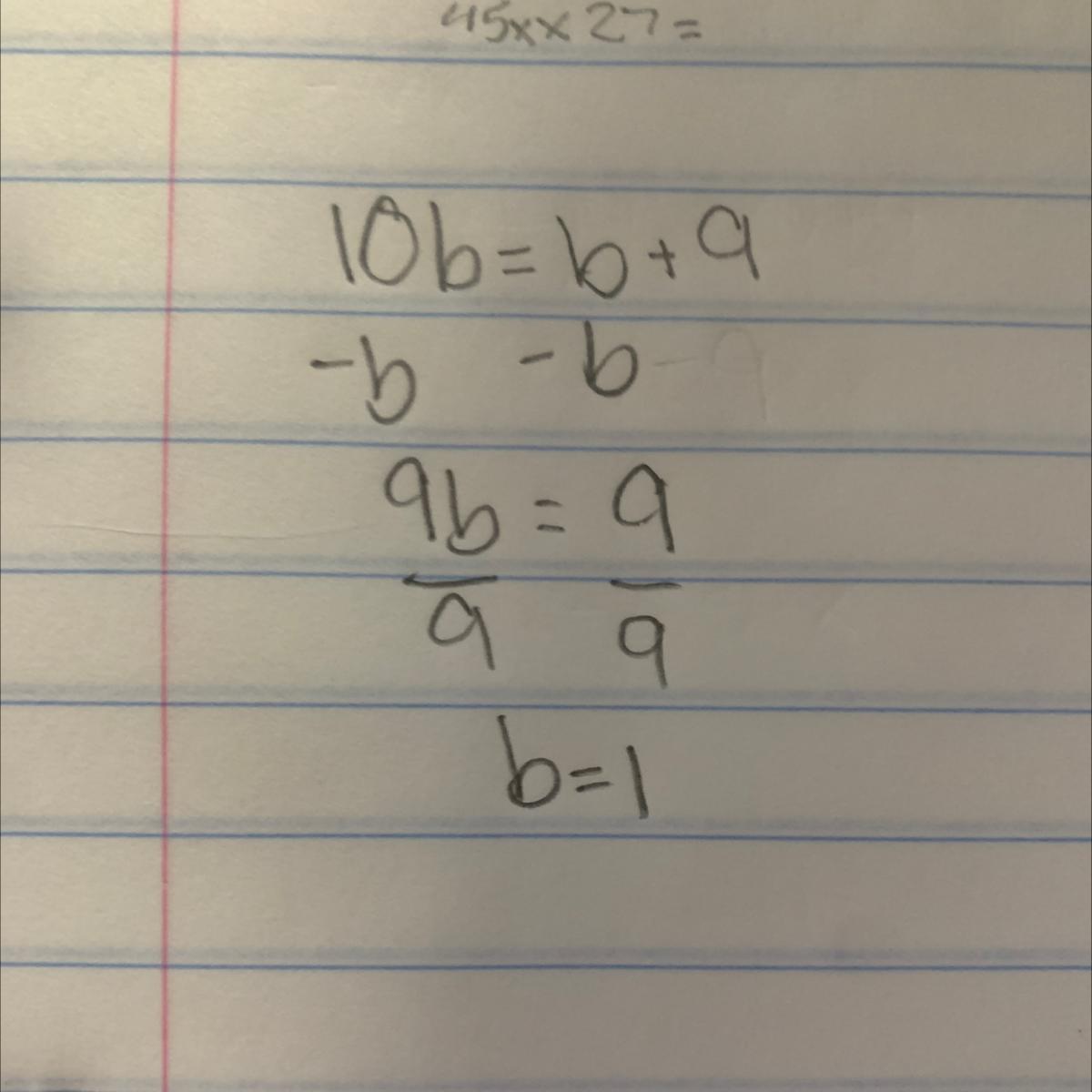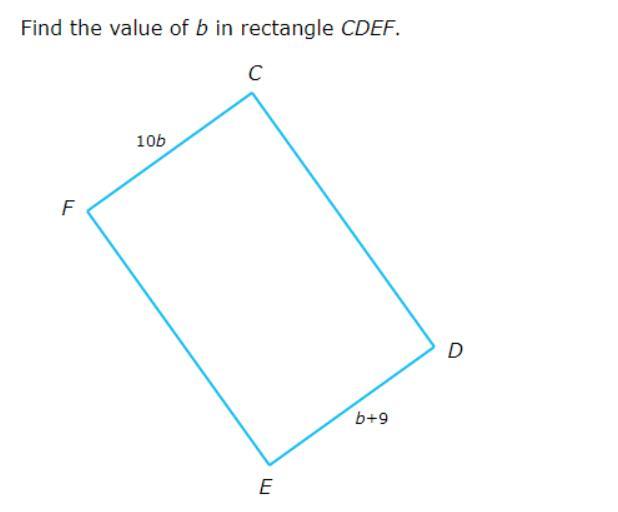Answers
i’ll attach an image to show work

Related Questions
Help with this please
Answers
Answer:
The is no picture
Step-by-step explanation:
Answer:
with what???
Step-by-step explanation:
12 girls are having a sleepover at a house, the food there can last them for 10 days. If 3 more girls came over, how long will food last
Answers
Answer:
The answer is 8
Step-by-step explanation:
12*10=120 120/15=8
(m 3 + m 2 - 39m + 21) ÷ (m + 7)
Answers
Answer:
Quotient = m2-6m+81 Remainder = -560
Step-by-step explanation:
in the pic above
Find the x intercept for the graph, 3x-14y+12=0
Answers
Roger has 47 cars. Can they be grouped in more than two ways?
Answers
Answer:
Is there more context? Like an image, describing what cars there are?
Step-by-step explanation:
You can sort cars by model type, brand, color, style, etc. So yes, unless there is only 2 types of car types/brands/colors/style etc
HOW TO CONSENTRATE ON STUDY?
Answers
Answer:
Listen to music or watch a video about what your about to study. Or do what I do... eat while studying
Step-by-step explanation:
Can someone answer this please!!! I only have 5 mins and u will get Brainly too :)
Answers
Answer:
72
Step-by-step explanation:
(a+b)h / 2
(9+15)6 / 2
24 x 6 / 2
72
I hope im right!!
Answer the question
Answers
A very large bag contains more coins than you are willing to count. Instead, you draw a random sample of coins from the bag and record the following numbers of each type of coin in the sample before returning the sampled coins to the bag. If you randomly draw a single coin out of the bag, what is the probability that you will obtain either a quarter or a penny
Answers
Missing Details
Quarters ≡ Dimes ≡ Nickels ≡ Pennies
23 ≡ 29 ≡ 17 ≡ 38
Answer:
[tex]P(Q\ or\ P) = 0.5701[/tex]
Step-by-step explanation:
Given
[tex]Quarters = 23[/tex]
[tex]Dimes = 29[/tex]
[tex]Nickels = 17[/tex]
[tex]Pennies = 38[/tex]
First, we calculate total number of coins
[tex]Total = 23 + 29 + 17 + 38[/tex]
[tex]Total = 107[/tex]
The probability of obtaining quarter (Q) of penny (P) is:
[tex]P(Q\ or\ P) = P(Quarters) + P(Pennies)[/tex]
[tex]P(Q\ or\ P) = \frac{n(Quarters)}{Total} + \frac{n(Pennies)}{Total}[/tex]
Take LCM
[tex]P(Q\ or\ P) = \frac{n(Quarters) + n(Pennies)}{Total}[/tex]
[tex]P(Q\ or\ P) = \frac{23 + 38}{107}[/tex]
[tex]P(Q\ or\ P) = \frac{61}{107}[/tex]
[tex]P(Q\ or\ P) = 0.5701[/tex]
Milo has 5 nickels. Milo has 6 fewer nickels than Elliott. How many nickels does Elliott have?
Answers
Answer:
11
Step-by-step explanation:
x - 6 = 5
What is the value of the expression shown? 6+43 – 8:2
Answers
Answer:
i'm sorry i think math is too hard could u help me
Step-by-step explanation: i understand the math problem
cos (390)
-4 cot (-45)
A phone salesperson is paid a minimum weekly salary and a commission for each phone sold, as shown in the table. Confirm that the relationship is linear and give the constant rate of change and the initial value. Write it in the form of y=mx+b. *
Answers
Answer:
i do not know that one
Step-by-step explanation:
I usely use desmos but thanks to my idiot dad i can't do that after 2 weeks he should be punished
Plzzz helpppp!!! (Plz include steps in answer so Ik how to do it!) Given vectors u = (4,4) and v = (-1,2), find the sum u + V and write
the result in component form.
Answers
v= -i+2j
Lets add them
u+v= 4i+4j-i-2j
u+v= 3i+2j
How are a parallelogram and a trapezoid different?
O A Atrapezoid has only 1 pair of parallel sides but a parallelogram has 2
O BA parallelogram has 4 nght angles but a trapezoid doesn't need to have 4 night angles
OC A parallelogram has only 1 pair of parallel sides but a trapezoid has 2
D. A trapezoid has 4 right angles but a parallelogram doesn't need to have 4 night angles
8 07 13 Answered
Answers
Answer:
(a) A trapezoid has only 1 pair of parallel sides but a parallelogram has 2
Step-by-step explanation:
Required
The difference between a trapezium and a parallelogram
The major difference is:
A trapezium has a pair of parallel side, the other sides are not parallel
A parallelogram has 4 sides where opposite sides are parallel (i.e 2 pairs of parallel sides).
Hence, (a) is correct
3 tons of cement cost $780.00. What is the price per pound?
Answers
Answer:
$260
Step-by-step explanation:
Divide $780.00 by 3.
780 ÷ 3 = $260
If each cube in the rectangular prism measures 1 cubic foot, what is the volume of the prism?
A. 13 cubic ft
B. 7 cubic ft
C. 6 cubic ft
D. 8 cubic ft
Answers
Answer:
C; 6 cubic ft.
Step-by-step explanation:
theres 6 cubes and each are 1 feet 2^ so therefore 6 times 1 = 6 ft. 2^
Can someone please help me I’m desperate it due tomorrowwww
Answers
Answer:
Step-by-step explanation:
First box: m=1/2
Second box: m=2
Third box: m=1
Fourth box: m=2
If 5 people shared
1
of a ton of rocks, how much will each person get?
15
0 75 tons
1
05 tons
55
25 tons
1
tons
75
Answers
Answer:
I need help with this to!
Which transformation could NOT be used to prove that two circles are congruent to one another?
a dilation with a scale factor of 2
a dilation with a scale factor of 1
a reflection
a rotation
Answers
Answer:
the congruent the congruent???
Step-by-step explanation:a dilation a dilation with two factors???
The transformation which could not be used to prove that two circles are congruent to one another is dilation with a scale factor of 2.
Option A is the correct answer.
What is a circle?A circle is a two-dimensional figure with a radius and circumference of 2πr.
We have,
Dilation:
It changes the size of the figure so, the transformed figure is not congruent with the original figure.
Scale factor = 1 will not change the size of the figure.
Scale factor = 2 will change the size of the figure.
Reflection:
It does not change the size or the shape.
Rotation:
It does not change the size or the shape.
Thus,
The transformation of dilation with a scale factor of 2 could not be used to prove that two circles are congruent to one another.
Learn more about circle here:
https://brainly.com/question/11833983
#SPJ6
need help pleaseee !!!
Answers
A circle garden has a diameter of 12 yards what is the area of the garden use 3.14 for pie
Answers
Answer:
37.7 ft
Step-by-step explanation:
Please help!!! Find the volume of the cylinder.
Round to the nearest tenth.
r= 3 cm
3 cm
V = [ ? ] cm3
Enter the number that goes in the green box.
Answers
Answer:
V ≈ 84.8 cm³
General Formulas and Concepts:
Math
π (pi) - 3.14159265RoundingPre-Algebra
Order of Operations: BPEMDAS
Brackets Parenthesis Exponents Multiplication Division Addition Subtraction Left to RightGeometry
Volume of a Cylinder: V = πr²h
r is radiush is heightStep-by-step explanation:
Step 1: Identify Variables
Radius r = 3 cm
Height h = 3 cm
Step 2: Find Volume
Substitute in variables [Volume Formula]: V = π(3 cm)²(3 cm)[Volume] Evaluate exponents: V = π(9 cm²)(3 cm)[Volume] Multiply: V = 27π cm³[Volume] Multiply: V = 84.823 cm³[Volume] Round: V ≈ 84.8 cm³Use the net to find the surface area of the cylinder. 6ft and 7ft
Answers
Answer:
A. 84 pi feet^2
Step-by-step explanation:
So the lateral area is the rectangular piece on the net
In order for it to be an actual cylinder the 2 circles are congruent
Therefore the radi, area, circumference ect.. are the same.
So the only missing measurement we need to find the lateral area is the length of the rectangular piece
If you visualize a cylinder, the rectangular piece goes around the perimeter/circumference of the circle
So that means that the length of the rectangle is the circumference of the circle
Circumference = 2*pi*r
2 * pi * 6
= 12 pi
Then 7*12 pi
=84 pi
So the lateral area is 84 pi
:0
Factorise
7lm - 21lmn
Answers
Answer:
7lm - 21lmn
taking common
7lm(1-3n)
What are 2 things you notice about the non-linear equation?
Answers
Answer:
An equation in which the maximum degree of a term is 2 or more than two is called nonlinear equations. For example 3x2 + 2x + 1 = 0, 3x + 4y = 5, this are the example of nonlinear equations, because equation 1 have highest degree of 2 and second equation have variable x and y.
2x² + 8x²8x-32
how do find the x and y intercept?
Answers
Answer:
Step-by-step explanation:
multiply and divide your equation then subtarct it and you get your answer
Which graph represents-5x+4y≥-1?
Answers
Answer:
D!
Step-by-step explanation:
Desmos has a free graphing calculator for future references :)
Can someone help me out please ? Will give brainiest answer. Need all 6
Answers
Step-by-step explanation:
tell me the math problem I will tell u the answer its blurry
Distance between the points (2,7) and (-2,-7)
Answers
Answer:
um isn't it (4,14)
Step-by-step explanation:
1/3log125/8-2log2/5+log80/125
[tex] \frac{1}{3} log( \frac{125}{8} ) - 2 log( \frac{2}{5} ) + log( \frac{80}{125} ) [/tex]
Answers
Answer:
[tex]3log2[/tex]
Step-by-step explanation:
Given
[tex]\frac{1}{3} log( \frac{125}{8} ) - 2 log( \frac{2}{5} ) + log( \frac{80}{125} )[/tex]
Required
Solve
Apply logarithm rules
[tex]log( \frac{125^{\frac{1}{3}}}{8^{\frac{1}{3}}} )- log( \frac{2^2}{5^2} ) + log( \frac{80}{125} )[/tex]
[tex]log( \frac{5}{2}} )- log( \frac{4}{25} ) + log( \frac{80}{125} )[/tex]
Apply quotient rule
[tex]log( \frac{5}{2} / \frac{4}{25} ) + log( \frac{80}{125} )[/tex]
[tex]log( \frac{5}{2} * \frac{25}{4} ) + log( \frac{80}{125} )[/tex]
[tex]log( \frac{100}{8} ) + log( \frac{80}{125} )[/tex]
Apply product rule
[tex]log( \frac{100*80}{8*125} )[/tex]
[tex]log( \frac{8000}{1000} )[/tex]
[tex]log(8)[/tex]
Express 8 as 2^3
[tex]log(2^3)[/tex]
[tex]3log2[/tex]
